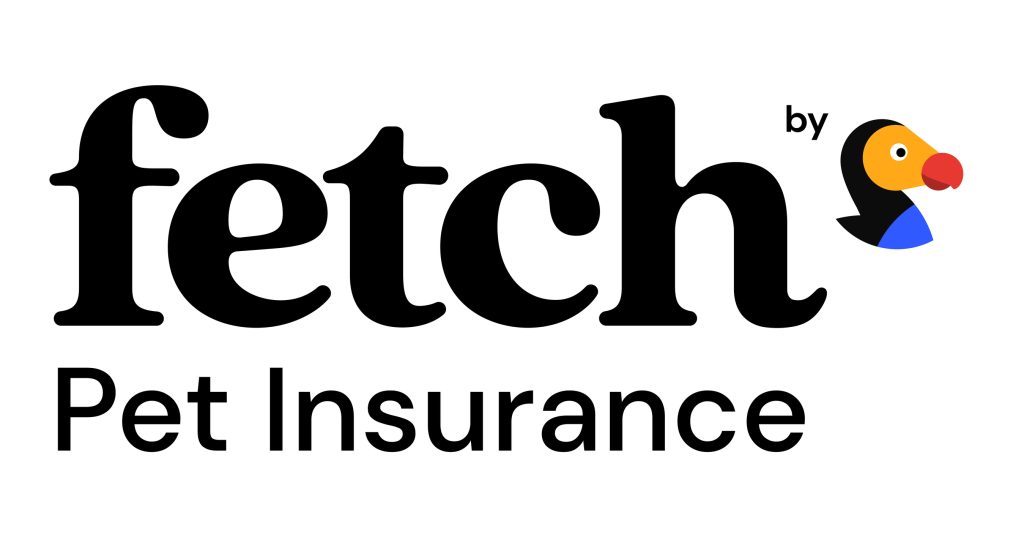Fetch pet insurance, a growing trend in responsible pet ownership, provides financial protection and peace of mind for pet parents. It’s a safety net that helps cover unexpected veterinary expenses, allowing you to focus on your pet’s well-being without the added stress of financial burden. Understanding the different types of coverage, the factors to consider when choosing a plan, and the potential benefits and drawbacks are essential for making informed decisions.
Navigating the world of pet insurance can seem daunting, but with careful research and comparison, you can find a plan that best suits your pet’s needs and your budget. From accidents and illnesses to preventative care and senior pet needs, pet insurance offers a wide range of coverage options. This guide will delve into the key aspects of fetch pet insurance, empowering you to make the right choices for your beloved companion.
Understanding Pet Insurance
Pet insurance is a type of insurance that helps cover the costs of veterinary care for your pet. It can provide financial protection and peace of mind, especially when unexpected illnesses or injuries occur.
Types of Pet Insurance Coverage
Pet insurance policies vary in the types of coverage they offer. Here’s a breakdown of common options:
- Accident-only: This basic plan covers costs related to accidents, such as broken bones, bites, and poisoning. It typically doesn’t cover illnesses or preventative care.
- Comprehensive: These plans provide broader coverage, including both accidents and illnesses. They may also cover preventative care, such as vaccinations and routine checkups.
- Wellness: These policies focus on preventative care, such as spaying/neutering, dental cleanings, and routine vaccinations. They may also cover some diagnostic tests.
Benefits of Pet Insurance
Pet insurance offers several benefits:
- Financial Protection: Veterinary care can be expensive, especially for serious illnesses or injuries. Pet insurance helps alleviate the financial burden by covering a portion of the costs.
- Peace of Mind: Knowing you have pet insurance can provide peace of mind, allowing you to focus on your pet’s health and well-being without worrying about excessive financial strain.
- Access to Better Care: Pet insurance can encourage pet owners to seek necessary veterinary care, even for expensive treatments, without financial constraints.
Potential Drawbacks of Pet Insurance
While pet insurance offers benefits, it also has some potential drawbacks:
- Premiums: Pet insurance premiums can vary depending on factors such as breed, age, and coverage level. They can be a recurring expense, especially for older pets or those with pre-existing conditions.
- Coverage Limitations: Pet insurance policies often have limitations, such as coverage caps, deductibles, and exclusions. It’s important to carefully review the policy terms and conditions to understand what’s covered and what’s not.
- Waiting Periods: Some policies have waiting periods before certain conditions are covered. This means you may have to pay out of pocket for initial treatment until the waiting period expires.
Factors to Consider When Choosing Pet Insurance: Fetch Pet Insurance

Choosing the right pet insurance policy can be overwhelming with so many options available. Understanding your pet’s needs, your budget, and the coverage options is crucial to making an informed decision.
Factors Related to Your Pet
It’s essential to consider your pet’s specific needs when choosing pet insurance. This includes their breed, age, health history, and lifestyle.
- Breed: Certain breeds are prone to specific health conditions. For example, German Shepherds are susceptible to hip dysplasia, while Brachycephalic breeds like Bulldogs are prone to breathing problems. Researching your pet’s breed and its common health issues can help you choose a policy with adequate coverage.
- Age: Younger pets generally require less medical attention, while older pets may need more frequent check-ups and treatments. Age can influence the cost of premiums and the coverage options available. For instance, some insurers may not cover pre-existing conditions in older pets.
- Health History: Pets with pre-existing conditions may face limitations in coverage or higher premiums. It’s important to disclose your pet’s health history to the insurer for a transparent assessment of their eligibility and policy options.
- Lifestyle: Pets with active lifestyles, like those who participate in agility or dog sports, may be more prone to injuries. Consider a policy that offers adequate coverage for accidental injuries and related treatments.
Comparing Pet Insurance Providers, Fetch pet insurance
Once you understand your pet’s needs, it’s time to compare different pet insurance providers. Focus on coverage, premiums, and customer service.
- Coverage: Compare the types of illnesses and injuries covered by different providers. Some policies may offer comprehensive coverage, while others may have specific limitations or exclusions. Pay attention to the coverage for accidents, illnesses, preventative care, and alternative therapies.
- Premiums: Premiums vary depending on factors like your pet’s breed, age, location, and the chosen coverage level. Compare premiums from different providers to find the best value for your needs and budget.
- Customer Service: Look for providers with a reputation for excellent customer service. Consider factors like ease of communication, claim processing time, and responsiveness to inquiries.
Reading Policy Terms and Conditions
Before committing to a policy, thoroughly read the terms and conditions. Pay close attention to the following:
- Exclusions: Identify any conditions or treatments not covered by the policy. This could include pre-existing conditions, certain types of surgeries, or alternative therapies.
- Waiting Periods: Understand the waiting periods for different conditions. This is the time you need to wait after purchasing the policy before certain conditions are covered.
- Deductibles: Familiarize yourself with the deductible amount. This is the amount you need to pay out-of-pocket before the insurance starts covering costs.
- Co-insurance: Understand the co-insurance percentage. This is the percentage of the vet bill you will be responsible for after the deductible is met.
- Annual Limits: Check for any annual limits on the amount of coverage. This is the maximum amount the insurer will pay out per year.
“It’s important to remember that pet insurance is a financial tool to help manage unexpected vet bills. It’s not a guarantee of coverage for every medical need, so carefully review the policy terms and conditions before making a decision.”
Pet Insurance and Preventive Care
Preventive care is essential for maintaining your pet’s health and well-being. It includes routine checkups, vaccinations, and parasite prevention. Pet insurance can play a significant role in covering these costs, potentially saving you money in the long run.
Preventive Care Coverage
Pet insurance plans often offer varying levels of coverage for preventative care. Some plans may cover a portion of the costs, while others may provide full coverage. It’s essential to carefully review the policy details to understand what is included and excluded.
Benefits of Including Preventive Care
- Cost Savings: Preventive care can help prevent costly health issues in the future. By catching health problems early, you can potentially avoid expensive treatments and surgeries.
- Peace of Mind: Knowing that your pet’s preventive care is covered can provide peace of mind, allowing you to focus on their overall well-being.
- Improved Pet Health: Regular checkups, vaccinations, and parasite prevention can help keep your pet healthy and free from preventable diseases.
Drawbacks of Including Preventive Care
- Higher Premiums: Plans that include preventive care may have higher premiums compared to plans that don’t. This is because the insurance company is covering more services.
- Limited Coverage: Some plans may have limitations on the types of preventative care they cover, such as specific vaccines or parasite treatments.
Cost Comparison
Here’s a comparison of the costs of preventative care with and without pet insurance:
| Service | Without Pet Insurance | With Pet Insurance |
|---|---|---|
| Annual Checkup | $100-$200 | $20-$50 (depending on coverage) |
| Vaccinations | $50-$150 | $10-$30 (depending on coverage) |
| Parasite Prevention | $50-$100 | $10-$20 (depending on coverage) |
Example: A dog owner pays $100 for an annual checkup, $100 for vaccinations, and $50 for parasite prevention, totaling $250 per year. With pet insurance, they may only pay $20 for the checkup, $10 for vaccinations, and $10 for parasite prevention, totaling $40 per year. This could result in significant savings over time.
Pet Insurance and Exotic Pets
Pet insurance for exotic pets presents unique challenges due to their specialized needs and the limited number of veterinary professionals who specialize in their care. While traditional pet insurance policies may not cover exotic pets, there are specialized providers that offer coverage for these unique companions. Understanding the factors involved in choosing pet insurance for exotic pets is crucial to ensuring their well-being.
Specialized Pet Insurance Providers
Finding pet insurance for exotic pets requires research and consideration of specialized providers. These providers often have specific policies designed to cover the unique medical needs of exotic pets, such as reptiles, birds, and rodents.
- Reptile and Amphibian Insurance: These policies often cover common health issues in reptiles and amphibians, such as infections, parasites, and respiratory problems.
- Bird Insurance: Policies for birds may cover issues related to their respiratory system, feathers, and digestive system.
- Rodent Insurance: Policies for rodents may cover common ailments such as respiratory infections, dental problems, and tumors.
Costs of Veterinary Care for Exotic Pets
The cost of veterinary care for exotic pets can be significantly higher than for traditional pets. This is due to the specialized nature of their care, which often requires specialized equipment and medications.
- Diagnostic Testing: Exotic pets often require specialized diagnostic testing, such as bloodwork, radiographs, and ultrasounds, which can be expensive.
- Surgery: Surgical procedures for exotic pets can be complex and require specialized veterinary surgeons, leading to higher costs.
- Medications: Medications for exotic pets are often formulated specifically for their species and may be more expensive than medications for traditional pets.
It’s important to note that the cost of veterinary care for exotic pets can vary significantly depending on the species, the condition being treated, and the location of the veterinary practice.
Resources for Pet Insurance

Finding the right pet insurance plan can feel overwhelming with so many options available. Thankfully, there are various resources to help you navigate the process and make an informed decision. These resources can provide valuable information, tools, and comparisons to help you find the best coverage for your furry friend.
Reputable Resources for Pet Insurance
These resources can provide valuable insights into pet insurance, including consumer guides, comparison websites, and insurance provider websites.
- Consumer Reports: Consumer Reports offers comprehensive pet insurance reviews and ratings based on factors such as coverage, claims processing, and customer satisfaction. They provide detailed information on various plans and help you understand the pros and cons of different providers.
- The Zebra: The Zebra is a leading insurance comparison website that allows you to compare quotes from multiple pet insurance providers. They offer a user-friendly platform that lets you customize your search based on your pet’s breed, age, and coverage needs.
- Pet Insurance Review: Pet Insurance Review is a dedicated website that provides in-depth reviews and comparisons of different pet insurance providers. They offer insights into coverage options, pricing, and customer experiences, helping you make an informed choice.
- Insurance Provider Websites: Most pet insurance providers have their own websites that offer detailed information about their plans, coverage options, and pricing. These websites often include customer testimonials, FAQs, and contact information.
Tips for Finding the Right Pet Insurance Plan
Finding the right pet insurance plan is crucial for ensuring your pet receives the necessary care without putting a strain on your finances.
- Determine your budget: Pet insurance premiums can vary significantly depending on factors such as your pet’s breed, age, and coverage level. It’s essential to determine a budget you’re comfortable with before starting your search.
- Consider your pet’s health and breed: Some breeds are prone to certain health conditions, making them more expensive to insure. Consider your pet’s health history and breed when choosing a plan.
- Compare coverage options: Different providers offer various coverage options, such as accident-only, illness and accident, and comprehensive plans. Carefully compare the coverage levels and exclusions to find a plan that meets your needs.
- Read the fine print: Before purchasing a plan, read the policy carefully to understand the terms and conditions, including deductibles, co-pays, and coverage limits.
- Look for customer reviews: Check online reviews and testimonials from other pet owners to get an idea of the provider’s reputation for claims processing and customer service.
The Importance of Research and Comparison
Before committing to a pet insurance plan, it’s essential to research and compare different options.
- Avoid rushing into a decision: Take your time to explore different providers and compare their plans. Don’t be swayed by flashy advertising or low premiums without understanding the coverage details.
- Get quotes from multiple providers: Request quotes from several reputable pet insurance providers to get a comprehensive understanding of pricing and coverage options.
- Ask questions: Don’t hesitate to contact providers directly to ask questions about their plans, coverage, and claims process.
- Consider your long-term needs: Think about your pet’s future health needs and choose a plan that provides adequate coverage for the long haul.
Ending Remarks
In conclusion, fetch pet insurance offers a valuable safety net for pet owners, protecting them from unexpected veterinary expenses. By understanding the different types of coverage, the factors to consider when choosing a plan, and the common claims and benefits, you can make informed decisions that ensure your pet’s well-being and your financial stability. Whether you have a playful puppy, a graceful cat, or an exotic pet, there’s a pet insurance plan out there that can provide peace of mind and the financial security you need to give your furry friend the best possible care.
Fetch pet insurance offers comprehensive coverage for your furry friends, ensuring they receive the best possible care in case of unexpected health issues. While Fetch focuses on pet insurance, Amica Mutual Insurance is a well-known provider of auto, home, and life insurance.
When considering pet insurance, it’s important to compare different providers to find the best fit for your pet’s needs and your budget.
